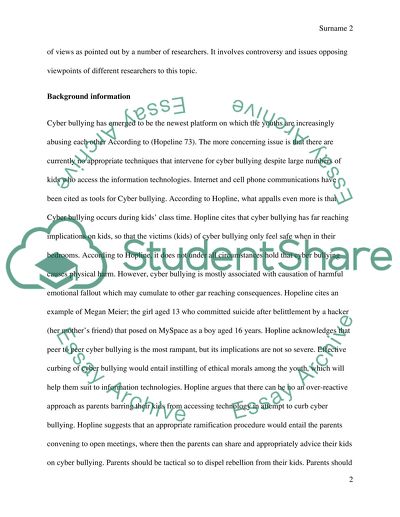Cite this document
(“Cyber bullying(Argumentative Paper) Research Paper”, n.d.)
Retrieved from https://studentshare.org/english/1461185-cyber-bullyingargumentative-paper
Retrieved from https://studentshare.org/english/1461185-cyber-bullyingargumentative-paper
(Cyber bullying(Argumentative Paper) Research Paper)
https://studentshare.org/english/1461185-cyber-bullyingargumentative-paper.
https://studentshare.org/english/1461185-cyber-bullyingargumentative-paper.
“Cyber bullying(Argumentative Paper) Research Paper”, n.d. https://studentshare.org/english/1461185-cyber-bullyingargumentative-paper.


